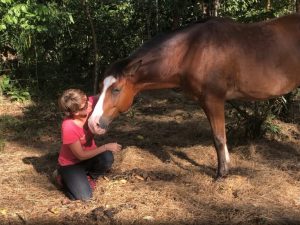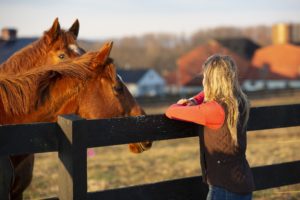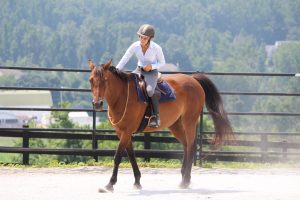I have a little challenge for you today…
In most of our interactions with our horses, we focus on what they can and will do for us. We want to ride them, groom them, teach them fun tricks… but rarely do we just go into their world – to observe how they spend 20 minutes of their day without our input and interference.
By simply observing, we can get a sense for the rhythm of our horse’s day, notice how they interact with other horses, and simply learn more about who they are when they aren’t doing all the things we ask of them.
In this video, I will talk about a simple way to observe more effectively and how to see things you may not notice by just “watching”.
Click play below to learn more.
See you in the comments!
Callie
p.s. Slowing down, observing, and noticing what your horse truly enjoys are the key components of our Pure Liberty program, led by Equine Behaviorist Andrea Wady.
If you are interested in creating a friendship with your horse, Click Here to Learn More about Pure Liberty














6 Responses
My horse is part of a large herd on 18 hilly acres with open pastures, low vegetation, and woods. Even though the fenced area is large, the herd moves as a single unit. There are two large water troughs at either end of the acreage. It was very interesting to watch how peacefully the horses gathered in vicinity of water troughs, respecting distances, waiting their turns in an orderly file, and drinking 2 at a time. When one horse finished and turned away, another horse took the open spot. This was a good exercise because I never take the time to observe herd patterns or watch how my horse moves in the herd. Seems I’m always in a hurry to gather up my horse for a ride.
Definitely take a few moments just to observe next time you are at the barn Donna, think you’ll be able to pick up on things you haven’t noticed yet! 🙂
-Julia, HorseClass Community Manager
This is such a good idea Callie. I will wait until summer until my horse is out in 70 acres away from much that she is in contact with in the winter. This winters she was in a large paddock with other mares but they are happy to see us when it is bitter cold. In the summer, not so much, they tend to go a bit “wild.” I hope I do not go when it is sleep time, 25 or so horses dead to the world and 2 standing guard! I love seeing the peace in the herd.
Totally understand Marjorie, we are nearly to spring here in our corner of the world 🙂
-Julia, HorseClass Community Manager
Today I did the observation challenge. 40 minutes in a back pasture that my horse doesn’t get to often. So interesting. I’m going to make this part of our Sunday routine. About 20 minutes in … out of nowhere my horse started bucking, running and rearing. Although very cool to watch … it also got me wondering. How do horses know to not do these behaviors when they have a rider on their back? I look forward to doing this again and comparing my notes.
Hi Vivian, horses are very stoic animals since they are prey animals to protect themselves and hide pain.
-Julia, HorseClass Community Manager